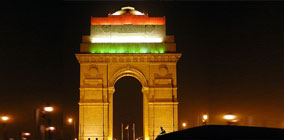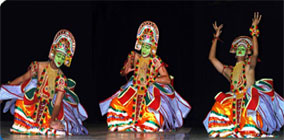NORTH INDIA WITH DESERT
Duration: 16 Nights / 17 Days
Places Covered: Delhi - Varanasi - Sarnath - Khajuraho - Agra - Fatehpur Sikri - Jaipur - Udaipur - Ranakpur - Jodhpur - Osian - Jaisalmer - Jodhpur - Delhi
Day 01 - Arrival in Delhi
A Our India Holidays representative will meet you at the airport and assist you with your hotel transfer. Delhi, India's capital has seen great empires rise and fall around it for millennia, with each new batch of rulers building over the works of their predecessors. As a result, the city abounds in monuments and ruins of stunning diversity. The seat of the world's largest democracy, it also boasts of magnificent symbols of government that pay architectural tribute to the ideals of self-rule and democracy. These co-exist side by side with wide multi-lane motorways, shopping malls, fast cars and ultramodern steel-glass office complexes that characterise any large 21st century metropolis. Overnight at Delhi.
Day 02: Sightseeing in Delhi

Your luxury holiday in India begins with Raj Ghat, the famous memorial to Mahatma Gandhi. The shrine bears testimony to the simplicity of the man who changed the world with the power of ideas. A simple black stone structure with an eternal flame burning at one end.
The majestic Red Fort was commissioned by the Mughal Emperor Shah Jahan in 1639, and remained seat of the empire for the next two centuries. Today, the Prime Minister of the India delivers his Independence Day speech to the nation from the ramparts of this red sandstone structure.
Jama Masjid is one of Asia's largest mosques. We shall view this magnificent structure from outside, its lofty and highly ornate domes and minarets reminiscent of a scene from the Arabian Nights.
Continue to New Delhi.
New Delhi was built by the British in the 1930s as their imperial capital. Majestic government and administrative buildings line the wide, tree-lined avenues of what is also known as Lutyen's Delhi after Sir Edwin Lutyens who was commissioned to design the city in 1911.
Start at India Gate, the red sandstone arch erected in memory of Indian and British soldiers who laid down their lives in World War I. Close by are the majestic Parliament House, the seat of the world's largest democracy and the Rastrapathi Bhawan, the Indian President's official residence. Inside are the famed Mughal Gardens with its ornate fountains and manicured lawns. Mughal Gardens are open to the public during spring.
Further south lies the Qutub Minar. Built by Qutubuddin Aibak, a slave general in 1193, it is India's tallest stone tower and marks the site of the country's first Muslim kingdom. The iron tower in a square opposite is unique in that it never rusts, although it has been exposed to the elements for centuries.
The lotus-shaped Bahai temple south of Delhi is also of interest. An ideal place for meditation, this Bahai House of worship is open to people of all faiths.
Overnight will be at Delhi.
Day 03: Delhi to Varanasi by air, excursion to Sarnath
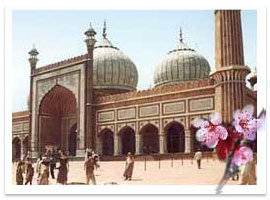
The ancient city of Varanasi on the west bank of the holy Ganga has been a spiritual center for Hinduism since the dawn of time.
Varanasi's high ghats (steps leading to and from the river) are crowded with priests, wrestlers, astrologers, devotees, bathers, morning walkers and saffron clad mendicants or sadhus. The ringing of temple bells and the heady, heavy smell of incense permeate everywhere. In Varanasi, even a short walk or a simple boat-ride is an unforgettable adventure.
The cinematic nature of daily life in Varanasi is not lost on filmmakers and over the years, many have made Varanasi their backdrop, among them maestros like Roberto Rossellini, James Ivory and Satyajit Ray. Fittingly, the first moving picture ever shot on Indian soil was filmed here in 1899.
Varanasi is one of the unforgettable highlights of your luxury holiday in the timeless Indian subcontinent.
A short drive from Varanasi, lies Sarnath where, millennia ago, the Buddha delivered his first ever sermon. Today, thousands of travellers from all over the world pour in every year to pay homage to what is one of the holiest places in Asia. The 1600 year old Dhamekh stupa marks the spot where the Buddha sat as he delivered his first teachings. Interestingly, this ancient stupa is a stand in for an even earlier structure erected by Emperor Asoka in 249 BC to commemorate the teaching.
The highly recommended Sarnath museum houses antiquities dating back to the 3rd century BC. Don't miss the gigantic red sandstone standing Bodhisattvas and the magnificent Ashokan pillar that is India's state symbol.
Back in Varanasi, proceed to the riverside to view the hypnotic evening Aarti, the ritual offering of lights. Your guide will be at hand to explain the meaning and significance of the rituals and chants.
Overnight at Varanasi.
Day 04 : Sightseeing in Varanasi
Go for an early morning boat ride along the middle of the river to watch the spiritual life of Hindu India unfold before you along the banks. Visit Dashashwamedh and Manikarnika, the holiest of the Varanasi ghats. A section of Manikarnika serves as a cremation ground and it is said the funeral pyre never dies here.
Visit the temple of Kashi Vishwanath with its famous solid gold spire, one of the holiest of Hindu temples. Devotees believe that praying here after a dip in the Ganges will grant them Moksha or liberation from the eternal cycle of life, death and rebirth.
Return to the hotel for breakfast. Afterwards, leave for further sightseeing.
Visit the 18th century Durga Temple. According to legend, the idol of the goddess simply appeared in the spot where the temple stands today.
The white marble Tulsi Manas Temple has scenes and stanzas from the Hindi epic Ram Charit Manas engraved upon its walls. The temple is in the traditional Shikhara style, its towers representing the great Himalayan summits or shikharas.
Up next, the 4000 acre Benaras Hindu University campus houses an art gallery and the Mosque of Mughal Emperor Aurangzeb.
Spend the evening exploring the ancient narrow alleyways of Varanasi.
Overnight at Varanasi.
Day 05 : Varanasi to Khajuraho by air, sightseeing in Khajuraho
Breakfast will be served at the hotel.
Proceed to the domestic airport for your flight to Khajuraho. A Our India Holiday representative will meet you at the airport and assist you with your hotel transfer.
The Chandela dynasty of Central India is credited with the construction of the magnificent Khajuraho Complex between the 9th and 10 centuries AD. The name Khajuraho may be a corruption of the Sanskrit Kharjura Vahaka, the bearer of the scorpion and could be a reference to one of Khajuraho's popular sculptures, depicting woman undressing to remove a scorpion from her body.
The sandstone walls of the Khajuraho temples are crowded with countless sculptures of gods, goddesses, dancers and beasts but it's the sections containing erotic sculptures that the temple is most famous for. Some interpret them as an indicator of the liberal and enlightened outlook of medieval Indian society but according to some scholars, the figures are merely metaphoric and conceal a deeper symbolism.
Khajuraho is a UNESCO World Heritage Site and one of the most exotic high points of your luxury tour of the Indian subcontinent.
Proceed to the temple complex, beginning with the western group of temples.
Kandariya Mahadev is the largest temple in the complex and is dedicated to Lord Shiva, with over 800 exquisitely sculpted figures of gods and celestial maidens adorning its walls.
Chausat Yogini Temple is the oldest in the complex. The only granite temple among the cluster, it's a shrine to one of the aspects of the fearsome Hindu Mother Goddess Kali, or The Dark One.
The Lakshmana Temple stands at the southwest corner. Look out for a minor shrine where one of the ancient sculptors added his own likeness in a touching act of vanity.
Other temples include the Vishwanath Temple with exquisite stonework on its outer wall, the Matangeshwar Temple with its famed eight foot high phallic lingam, the Chitragupta Temple, inside which the radiant Sun God rides his seven-horse chariot, and the Varaha Temple that houses a 1.5 m high Varaha, the incarnation of Lord Vishnu as a giant boar, that attempts (and fails) to find the end of the universe.
The Brahma and the Hanuman temples are the most famous and best preserved among the Eastern Group of temples. Don't miss the Vamana temple that showcases in elaborate stone work all ten incarnations of Lord Vishnu.
In the evening, attend an immersive sound and light show at the western complex.
Overnight at Khajuraho.
Day 06: Khajuraho to Agra by road and rail, visit Orchha en route, explore Agra
After breakfast, proceed to Orchha on a spacious, comfortable, Our approved vehicle.
12 kms from Khajuraho, the medieval city of Orchha on was founded in 1501 by the Bundela rulers on the bank of the Betwa river. The town is famous for its cenotaphs, locally known as chhattris, built in the memory of long-dead kings.
Of interest, the Orchha Fort, the majestic high domes and spires of Chaturbhuj Temple and the Raj Mandir, both constructed in the later half of the 16th century. Enjoy your lunch at Orchha.
Proceed to Jhansi railway station and take the train to Agra. A Our representative will meet you upon arrival and assist you with your hotel transfer.
The Mughal capital of Agra on the banks of the Yamuna River is a bustling town teeming with narrow, winding alleyways that hark back to an era gone by. Dotted by magnificent monuments including UNESCO World Heritage Site Taj Mahal, the city is a dazzling contrast of red sandstone and white marble structures.
Explore the bustling narrow winding lanes of Agra. The old ways are alive in hiden nooks and corners, and a short walk or rickshaw ride will take you back in time, into the lives of ordinary people during the Mughal era.
Agra also makes for interesting shopping. Hunt for sweet pethas in the back alleys. Or visit bazaars in search of zardozi artworks, jewelry, stone filigree work and the ubiquitous Taj Mahal replica. Be prepaed for some hard-nosed bargaining.
Overnight at Agra.
Day 07: Sightseeing at Agra, visit the Taj Mahal
Enjoy an early morning sunrise tour of Taj Mahal, the best time to see and experience the ultimate monument to love.
Built by Mughal Emperor Shah Jahan as a memorial to his queen Mumtaz Mahal and designed by Persian architect Ustad, the magnificent Taj Mahal is one of the seven wonders of the world. A massive white marble structure so delicate that it appears to float in the air, the Taj is otherworldly in its beauty and is best viewed in moonlight or at dawn and dusk. The close-up view reveals breathtakingly intricate inlay work carved into the marble, and bears eloquent testimony to the triumph of Mughal art, culture and architecture at its peak. No holiday in India is complete without the Taj.
Return to the hotel for breakfast.
Afterwards, proceed for sightseeing around Agra.
A beautifully maintained tree-lined monument at Sikandra marks the grave of the illustrious Akbar the Great. A great believer in harmony and equality of all religions, this visionary Mughal Emperor created Din-i Ilahi, a unique religion that combines the fundamentals of Islam, Hindusim, Buddhism and Christianity. His memorial imbibes architectural motifs of all the faiths that inspired him.
Standing across the river from the Taj, the majestic red sandstone structure of Agra Fort was erected in 1565 by Mughal Emperor Akbar the great. Little did he know that the same fort would later serve as prison for his grandson Emperor Shah Jahan in the end of his days. From his prison perch of Musamman Burj, an exquisite octagonal marble tower atop the fort, Shah Jahan would spend his last days looking out longingly at the Taj.
Itmad-ud-Daulah is perhaps the Mughal Empire's best kept secret. Empress Nur Jehan, wife of Jahangir, son of Akbar, commissioned the structure as a memorial to her father. Mistakenly called Baby Taj, Itmad-ud-Daulah in fact is decades older than the Taj, and may have served as its design blueprint.
Overnight at Agra.
Day 08: Agra to Jaipur by road, visit Fatehpur Sikri en route
Breakfast will be served at the hotel. Drive to Fatehpur Sikri.
Fatehpur Sikri, or the "City of Victory", built by Emperor Akbar in 1569 in honour of sufi saint Salim Chishti was the capital of the Mughals for 14 years. The white marble Tomb of the Salim Chisti with its intricately carved marble screens occupies pride of place in the central courtyard of the structure.
Attractions include the colossal Buland Darwaza, a victory gate built to mark the conquest of Gujarat by Emperor Akbar, the Diwan-i-Aam where the emperor held his legendary hearings with the general public and the
where he held private consultation with his nine ministers, or as he called them, his navaratna or nine gems.
Fatehpur Sikri also houses the palace of Jodhabai, Akbar's Hindu wife, and the house of the legendary Birbal - Akbar's Hindu minister and one of the navaratnas - the tales of whose extraordinary wit and wisdom are the stuff of popular culture in India, inspiring countless comic books and children's animation TV shows.
Proceed to Jaipur.
Jaipur, also known as the 'Pink City' from the facelift it received in 1853 to celebrate a visit by Prince Albert, is dotted with havelis (traditional mansions), bazaars, opulent palaces and rugged majestic forts that showcase the glorious past of its rulers, the Rajputs.
The Rajput princes were fierce warriors some of whom declared loyalty to the invading Mughals and proved to be formidable allies of the empire. Among them was King Jai Singh II, whom the Mughals gave the title Sawai Maharaja, or "King and a quarter". Jaipur gets its name from this valiant king.
This evening, visit the Birla Temple. A stunning white marble structure, the three towers of the Birla Temple stand for three different approaches to religion. Carvings on the ornate pillars celebrate Hindu gods and goddesses along with Christ, Virgin Mary and St. Francis of Assisi. Don't miss the hypnotic evening Aarti, the ritual lighting of oil lamps.
Overnight at Jaipur.
Day 09: Sightseeing in Jaipur
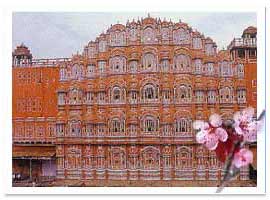
Situated on the top of a hill, the magnificent Amber Fort Palace offers a panoramic view of the old city. Established in 1592, its rugged exteriors believe the delicate architecture inside, a rare fusion of traditional Rajasthani and Islamic styles. Reach the fort the old fashioned way, atop a ceremonial elephant along a cobbled path up that opens into several havelis, step wells, courtyards and temples. Visit Sheesh Mahal or chamber of mirrors, Jas Mandir with its ornate ceilings and latticework and the stunning Shila Devi temple with its intricately carved silver door.
The sprawling City Palace has been home to the rulers of Jaipur since the 18th century. The architecture of the palace is a blend of traditional Rajasthani and Mughal styles. The City palace Museum is located here and houses various items from Jaipur's princely and warrior past.
The scientific-minded King Jai Singh II, an astronomy enthusiast, commissioned five observatories named Jantar Mantar around West Central India in the early 1700s. The one in Jaipur is the largest and the best preserved. The massive architectural instruments are constructed out of local stone and marble some of which are still in use. We shall walk through and explore this surreal maze of giant geometric objects.
The exquisite outer facade of Hawa Mahal, the "Palace of Winds," resembles a manmade honeycomb and is one of Jaipur's most iconic and oft photographed sights. Designed to facilitate maximum air circulation and cross ventilation, the five-storied Hawa Mahal is made of lime and mortar, and decorated with impossible intricate trelliswork. From the privacy of its ornate jharokhas (traditional Rajasthani windows), the ladies of the court could gaze out at life in the streets below.
This afternoon is free for you to relax shop or explore independently. Shopping is superb in Jaipur, particularly for gold and silver jewelry, pottery, tie-dye materials, silk, saris, wooden handicrafts and carpets.
Overnight at Jaipur.
Day 10: Jaipur to Udaipur by road
Enjoy breakfast at the hotel. Latre, drive to Udaipur in a spacious, comfortable Our approved vehicle.
Founded by Maharana Uday Singh, beautiful Udaipur on the banks of Lake Pichola is a fairyland with beautiful palaces in the middle of lakes, islands, opulent havelis and temples. Surrounded by the ancient Aravalli hills, Udaipur shimmers in dazzling white and is also called the City of Dawn.
Overnight at Udaipur.
Day 11: Sightseeing in Udaipur
Breakfast will be served at the hotel.
Proceed for sightseeing tour of Udaipur, stopping first at City Palace.
The massive City Palace overlooking the Lake Pichola is a glittering example of Rajput architecture. A part of the city palace is now a museum. Behind the fortified walls of the palace, dark, steep and narrow staircases connect a maze of royal chambers and courtyards. Dazzling intricate miniatures, antiques and paintings are on display everywhere. Of note are gorgeous mosaics of peacocks in More Mahal and a courtyard full of shady trees on the terrace of Amar Vilas.
Maharana Sangram Singh built Saheliyon Ki Bari or "Garden of the Maidens" in the mid 18th century on the shores of Fateh Sagar Lake. The lush green lawns of the garden are replete with fountains whose spouts are placed inside the trunks of large stone elephants. The water flow is controlled solely by water pressure. No pumps are used. Of particular note is an interesting medieval experiment in sound design. In a secluded corner of the garden, carefully selected large leafed plants damp the sound of flowing water on stones to create the auditory effect of being in a large tropical forest in pouring rain.
The magnificent 17th century Jagdish Temple is located in the center of the city and is a fine example of Indo-Aryan architecture. The main deity at the center is a giant black stone image of Lord Vishnu. The outer walls of the temple and the tower feature highly detailed carvings depicting Vishnu and scenes from the life of Krishna.
Built in 1751, Bagore Ki Haveli on Gangaur Ghat of Lake Pichola has over a hundred rooms displaying interesting artifacts and paintings. Of note is the fascinating puppet museum. The officials in charge are happy to organize a short impromptu puppet show for interested visitors.
The magnificent 17th century Jagdish Temple is located in the center of the city and is a fine example of Indo-Aryan architecture. The main deity at the center is a giant black stone image of Lord Vishnu. The outer walls of the temple and the tower feature highly detailed carvings depicting Vishnu and scenes from the life of Krishna.
Later, proceed for an evening cruise on Lake Pichola. Enjoy a stunning view of Udaipur city and the Aravalli hills from over the water. Visit the majestic Jag Mandir Palace situated in the middle of the Lake.
Overnight at Udaipur.
Day 12: Udaipur to Jodhpur by road, visit Ranakpur en route
Breakfast will be served at the hotel.
Drive to Ranakpur.
The 15th century Ranakpur Temples are situated in the middle of dense woods and are an important pilgrimage for the Jain community. The temples' exterior is majestic yet somber, while the interiors are richly embellished with highly intricate carvings covering every inch of the solid marble walls. This reflects the Jain belief in the importance of a rich inner life within a simple exterior. The huge domed marble central ceiling of the temple is so adorned with dazzling filigree work that it looks almost translucent. The hushed silence inside the temple and the subtle smell of incense will put even the most gregarious traveller in a contemplative mood.
Proceed to Jodhpur.
Set at the edge of the THAR Desert, the imperial city of Jodhpur echoes with tales of antiquity in the emptiness of the desert.
Rao Jodha, chief of the Rathore clan, founded the city of Jodhpur in 1459. Situated on the edge of Thar Desert, Jodhpur embodies the romance and feudal plendour of Rajasthan. Jodhpur is also called the 'Blue City' from the blue houses that surround its most famous landmark, the majestic Mehrangarh Fort that sits on the top of a hill 125 meters above the city. The city itself is surrounded by high walls 10 kilometers long.
Overnight at Jodhpur.
Day 13: Sightseeing in Jodhpur
Breakfast will be served at the hotel. Proceed for sightseeing tour.
Hewn out of solid rock atop the red sandstone cliff overlooking Jodhpur 400 feet above the city, the awesome 15th Century Mehrangarh fort spreads out over 5 kilometers and in the words of Rudyard Kipling, is the "work of angels and giants". The fort's defences are impressive, with seven highly fortified gates to reach the fort, and massive, ornate cannons perched on the bastion walls. The view of the Blue City from the ramparts of the fort is breathtaking. In spite of the forbidding exteriors, the fort's exquisitely latticed windows, carved panels, and ceiling with radiant glass tiles reveal another more artistic side to its warrior inhabitants. Batman fans might remember Mehrangarh Fort from an iconic scene in Chris Nolan's The Dark Knight Rises.
Jaswant Thada, the white marble memorial to Maharaja Jaswant Singh II is known for its highly intricate lattice-work. The marble used in the structure is translucent and in the day time, the interior walls glow from the sunshine outside. Jaswant Singh II was known for his innovative irrigation projects and to this day, locals throng to Jaswant Thada to pay their respects to the benevolent king whose touch once healed their arid land.
Later, embark on a short jeep safari.
Members of the Bishnoi Tribe have been steadfast conservationists centuries before conservation became fashionable. Much like the Native American people, the Bishnois have a deep understanding of the interconnectedness of all species and believe that the continued survival of mankind is only possible if mankind takes steps nurture and preserve every species of plant and animal that populates our planet. So much so, that it is common to spot, completely unafraid herds of blackbuck grazing right inside the Bishnoi villages. A visit to the Bishnoi Village gives one a rare and intimate insight into the daily life of this ancient, enlightened tribe.
Overnight will be at Jodhpur.
Day 14: Jodhpur to Jaisalmer by road, visit Osiyan en route
Breakfast will be served at the hotel.
Proceed to Osiyan.
Osiyan is an 8th century town that grew and prospered around an oasis in the heart of the Thar Desert, gaining importance as a trading post between the 8th and 11th centuries. Stunning, richly engraved Jain Temples made of sandstone dating back to that era bear testimony to Osiyan's medieval prosperity.
Proceed to Jaisalmer.
In the heart of the Thar desert, Jaisalmer stands amidst a shifting landscape of giant sand dunes, its yellow sandstone buildings blending seamlessly with the desert sands. Founded in the 12th century by Maharawal Jaisal Singh, Jaisalmer is the perhaps the most iconic of Rajasthan's cities.
Overnight at Jaisalmer.
Day 15: Sightseeing in Jaisalmer
The magnificent Jaisalmer Fort is one of the oldest in the world and still in use, housing more than a quarter of the city's population. Brooding, proud and tall, Jaisalmer Fort stands atop a hill, its dazzling yellow sandstone walls providing a natural camouflage against the yellow sands all around. Three layers of high yellow walls surround the fort, never breached in 800 years. Inside, narrow serpentine alleyways lead into and around magnificent old havelis, museums, markets and cafés. The sharp cry of peacocks occasionally breaks the majestic silence of the surrounds.
The Jaisalmer Fort also houses some intricately carved Jain Temples dating back to between the 12th and 15th centuries. Gyan Bhandar, an ancient library in the temple complex, houses very old and rare manuscripts from that era.
In the late afternoon, proceed to the sand dunes for visiting the typical Rajasthani desert village. View the sunset from the dunes, as the sky is set on fire. Return to the village for dinner amidst Rajasthani musicians playing haunting tunes.
Overnight at Jaisalmer.
Day 16: Sightseeing in Jaisalmer
Breakfast will be served at the hotel. Later, proceed for sightseeing.
The 19th century Nathmal ki Haveli may be identified by the two life sized yellow sandstone elephants that stand guard at its gates and the murals that adorn its walls. According to legend, the building was built by two brothers one of whom concentrated on the left side of the structure and another on the right, leaving the final product a bit asymmetric.
The three hundred year old Salim Singh ki Haveli is an interesting experiment in building design. Narrow at the base, the structure grows wider with every level. Completely stable, the haveli is occupied to this day.
The magnificent six story high Patwonji ki Haveli is known for the highly intricate carvings on its walls and houses the local office of the Archeological Survey of India.
The Tazia Tower was a gift to the rulers of Jaisalmer from the Muslim stone carvers who worked on the city. Shaped like a tazia, a wooden tower carried by Shia Muslims during Muharram, it is, in terms of building style, different from everything else in Jaisalmer.
The 15th century Godi Sagar Lake once held the town's entire water supply. Surrounded by temples, the lake is home to migratory birds in winter. Don't miss Tilon ki Pol, the beautiful yellow sandstone gateway that leads one to the lake.
Overnight at Jaisalmer.
Day 17: Jaisalmer to Jodhpur by road
Jodhpur to Delhi by air, tour ends
Breakfast will be served at the hotel. Start for Jodhpur at leisure. Stop at the luxurious Manwar Camp for lunch and afterwards, drive to the airport to catch your flight to Delhi.
Board your flight home from New Delhi International Airport.

| Bhutan Tour | ||||||||||
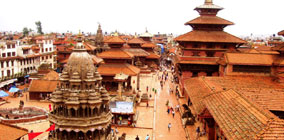
|
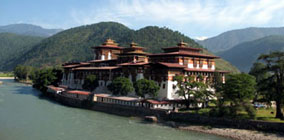
|
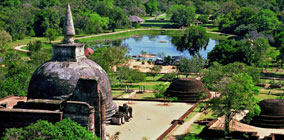
|
Vacaciones con encanto
| » El triangulo de or 7 días | » Reflejos de Rajasthan con Varanasi y Khajuraho | » Viaje a los majestuosos templos y palacios de la India |
| » Pintoresco Rajsthan Con El Taj Mahal | » India Clásica Con Nepal | » Arquitectura, turismo en la Ciudad Rosa y relax en Goa |
| » Viaje a la Tierra del Tigre | » Viajar a Varanasi, India | » India Fascinante y la Belleza Natural de Nepal y Tibet |
| »India Sur con Backwaters | »Itinerario India Sur | » Templos y patrimonio de la cultura de India Sur |
Art of Living
| » The Great Taj Mahal Tour | » El triangulo de or 7 días | » Reflejos de Rajasthan con Varanasi y Khajuraho |
| » North India Highlights Tour |


